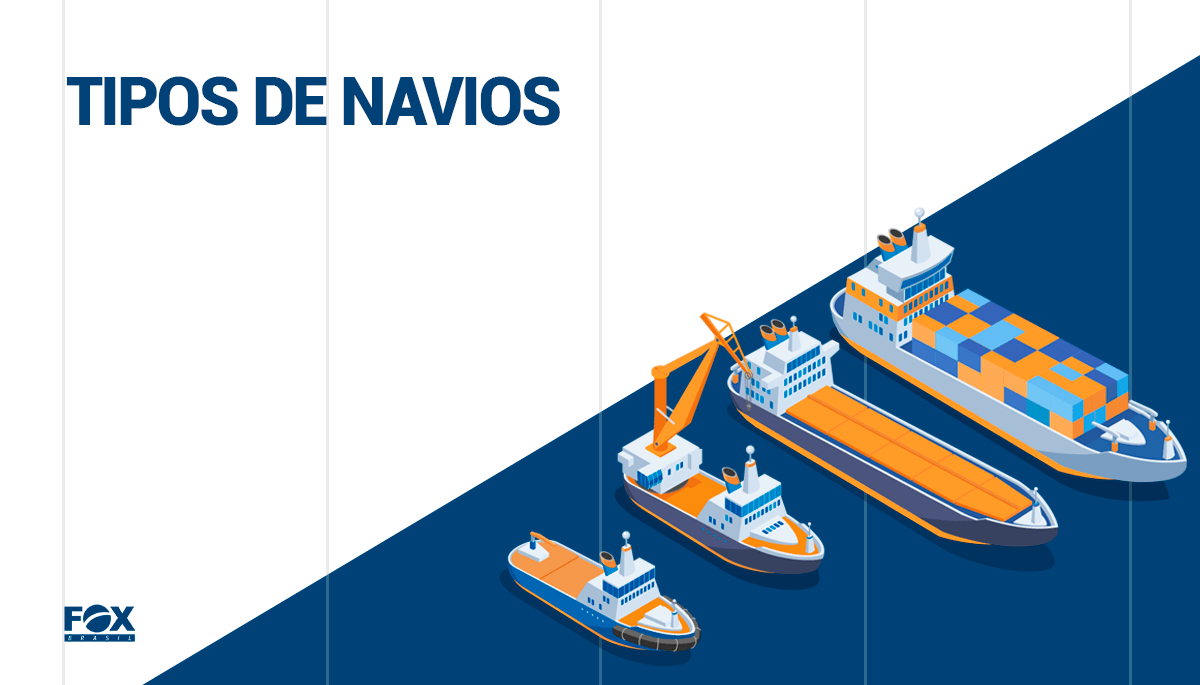Tipos de Navios

Novidades sobre a FOX Brasil
Nós chamamos de carga os produtos que serão carregados em um transportador e enviados para outro lugar. Esses produtos são de todos os tamanhos e formatos, e para podermos transportá-los nós precisamos de tipos diferentes de veículos que são feitos para se adequar às suas necessidades específicas.
Just like trucks, ships offer a wide variety of models that were created to properly support all kinds of cargo in order to get them delivered in the safest and most practical way possible. Let?s take a look at some of the main types of vessels and what they are used for.
Navios de carga geral ou de Múltiplos-propósitos
These ships are able to carry a variety of commodities: Steel, wood, construction materials, and even bulk cargo, as long as it isn?t anything too specific that may require special handling or storage, these cargo ships can attend to their needs.
Navios porta-container
Made specifically to transport cargo in standard containers, these ships are responsible for over half of the international trade?s ocean traffic, being the most commonly used type of vessel since containers can be moved from the ships directly into trucks or trains, which simplifies transportation in general.
Navios graneleiros
They are ideal for the transport of bulk cargo such as cement, grains and minerals, whether they?re packaged or not. Some bulk carriers have reinforced floors to be able to support the weight of the materials, as well as their own loading and unloading equipment.
Tanques
Equipados com tanques especiais para o transporte de óleo, esses navios também têm maior resistência estrutural para tornar o transporte o mais seguro possível, já que vazamentos desses materiais podem ser extremamente prejudiciais para o meio ambiente, assim como causar prejuízos financeiros enormes. Navios como esses são capazes de transportar até dois milhões de barris de óleo por vez.
Também existem modelos mais sofisticados de tanques, feitos para transportar gás líquido, conhecidos como GNL, para gases naturais, e GPL, para gás líquido de petróleo.
Navios Ro-Ro
Ro-Ro is short for ?Roll-On, Roll Off? which is a reference how the loading and unloading of the cargo works in these ships. They are equipped with ramps and their structure is designed specifically to transport vehicles in a way that doesn?t cause damage to neither the vessel nor the freight. Trucks, for example, can be transported fully loaded inside these ships and continue their routes when they arrive to the destination country, making Ro-Ro ships a huge asset to intermodal freight transport.
Navios Semi-Submergíveis
These ships are capable of submerging until their main deck is underwater, and with that they use the ocean?s support to stay afloat and stable while transporting exceptionally heavy and big cargo among the movement of waves.
It doesn’t matter the type of ship you need for your cargo, FOX Brasil is here to turn this path much easier. If you’re looking for the best partner to move your cargo, please send an email to contact@foxbrasil.com so our team may assist you.